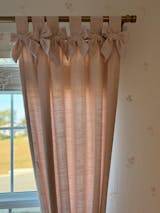Home Design with an Emotional Appeal
By Lanada Chanel Duncan
Founder, CEO of b.e. decors Interiors
@b.e.decors
“Homes are no longer just places to eat, sleep, and gather; they are sanctuaries for relaxation, productivity, and emotional health.”-Lanada Chanel Duncan
“Form follows feeling” is the underlying principle of design driven by emotion—the idea that the spaces we inhabit influence our physical and mental wellness and even our actions and feelings day to day. While this concept has long guided intentional interior design, recent advancements in science and psychology have given it a name: neuro-design.
Neuro-design delves deeper into the research-backed understanding of how our built environments affect human biology and emotions. While I’ve often referred to this approach as wellness design, neuro-design takes it a little further by exploring the interplay of aesthetics, spatial planning, and sensory experiences to shape how we feel in our homes.
Take a quick glance through any current design magazine, and you’ll notice homes styled with deliberate attention to sensory and emotional appeal. From bold, eye-catching patterns to textured upholstery on everything from armchairs to bed frames, these design elements stimulate both the mind and the senses. Fluid shapes—curves, waves, and angles—are also taking center stage, subtly influencing how we perceive and move through home spaces.

(From@countneyfavini)
What Is Neuro-Design?
At its core, neuro-design integrates neuroscience and psychology with design principles to craft spaces that foster comfort, creativity, and well-being. Researchers have found that elements like light, color, texture, and layout directly impact brain activity, mood, and behavior. For example, exposure to natural light has been proven to improve sleep quality and reduce stress, while rounded furniture and organic forms evoke feelings of safety and calmness.

(From@marlydiceblog)
Why Neuro-Design Matters to Homeowners
As more homeowners seek living spaces that offer more than just aesthetic appeal, neuro-design is rising in popularity. Homes are no longer just places to eat, sleep, and gather; they are sanctuaries for relaxation, productivity, and emotional health. For those struggling with stress, fatigue, or a lack of connection to their surroundings, neuro-design principles offer a path toward meaningful transformation.
For instance, in living rooms and bedrooms, incorporating soft textures like plush rugs or throw blankets can evoke warmth and coziness, while furniture arranged in intimate, circular layouts fosters connection and conversation. Additionally, kitchens designed with intuitive flowing clean, minimal lines help reduce chaos, making meal preparation a stress-free routine.
Design Trends Inspired by Neuro-Design
The growing number of designers embracing neuro-design reflects a larger shift in the way we view our homes—not just as places of shelter but as tools for improving our mental, physical, and emotional wellbeing. This design philosophy helps us to be more intentional when designing spaces, because it reminds us that homes, when styled with intention, are powerful reflections of ourselves, our quality of life, and the way in which we choose to live.
Here are five my favorite intentional design principles that have become popular trends making waves amongst the neuro-design community:
- Biophilic Design: Incorporating natural elements like wood, stone, and indoor plants to help homeowners connect to nature, reduce stress, and boost creativity.
- Color Psychology: Using soft, earthy tones, shades of green and terracotta to promote calmness, while incorporating cheerful pops of color – rusty reds, oranges, shades of blues, yellows, and purples - to energize a space.
- Textural Play: Combining smooth and rough materials—think sleek marble paired with a woven rug—adds depth and stimulates the sense of touch, creating spaces that feel layered and dynamic.
- Lighting Control: Installing adjustable lighting systems to mimic natural daylight rhythms, enhance mood, focus, and improve circadian health.
- Purpose-Driven Layouts: Multi-functional spaces with defined zones that align with how people live, improving usability and comfort.

(From@thislovelyabode)
The Emotional Benefits of Intentional Design
When homes are designed with emotional well-being in mind, the impact is profound. Imagine walking into a living room flooded with natural light, surrounded by soothing colors and soft, organic furnishings. This intentional design doesn’t just create visual harmony—it sets the stage for mindfulness, relaxation, and joy.
Similarly, a dining room designed to encourage connection through cozy seating and warm lighting can turn routine meals into cherished family moments. Even intricate details, like adding tactile throw pillows or strategically placing mirrors throughout your home to amplify light, can elevate the mood and energy of a space.

(From@themalishhome)
Making Neuro-Design Accessible
For those curious about incorporating neuro-design principles into their homes, start small. Here are five practical tips:
- Maximize Natural Light: Use sheer or light filtering curtains to let in sunlight and position mirrors to reflect light throughout your living spaces.
- Bring Nature Indoors: Add houseplants, wooden furniture, or natural stone décor and products to create a biophilic connection.
- Play with Color: Choose paint colors and accessories that align with the mood you want to evoke in your home.
- Layer Textures: Combine smooth, soft, and rough textures in your furnishings and decor to engage the senses.
- Curate Your Layout: Eliminate clutter and arrange furniture in a way that promotes both function and flow.
By blending scientific insights with creativity, neuro-design offers a roadmap for turning ordinary rooms into extraordinary spaces that enhance wellness and bring joy and peace to daily living.




























Leave a comment